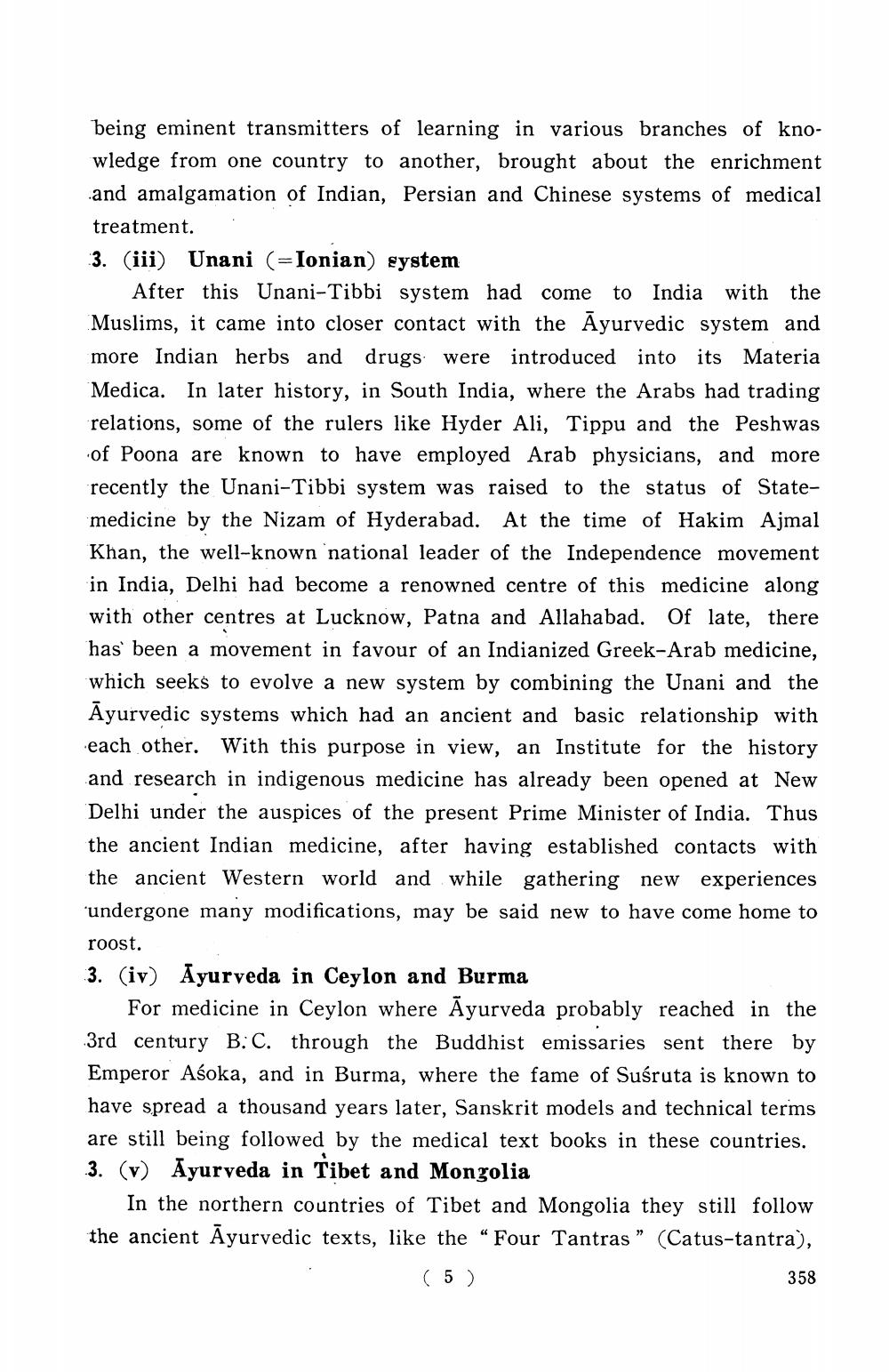Book Title: Traditional System Of Indian Medicine Ayurveda The Background Author(s): V V Gokhle Publisher: V V Gokhle View full book textPage 6
________________ being eminent transmitters of learning in various branches of knowledge from one country to another, brought about the enrichment and amalgamation of Indian, Persian and Chinese systems of medical treatment. 3. (iii) Unani (=Ionian) system After this Unani-Tibbi system had come to India with the Muslims, it came into closer contact with the Ayurvedic system and more Indian herbs and drugs were introduced into its Materia Medica. In later history, in South India, where the Arabs had trading relations, some of the rulers like Hyder Ali, Tippu and the Peshwas of Poona are known to have employed Arab physicians, and more recently the Unani-Tibbi system was raised to the status of State nedicine by the Nizam of Hyderabad. At the time of Hakim Ajmal Khan, the well-known national leader of the Independence movement in India, Delhi had become a renowned centre of this medicine along with other centres at Lucknow, Patna and Allahabad. Of late, there has been a movement in favour of an Indianized Greek-Arab medicine, which seeks to evolve a new system by combining the Unani and the Ayurvedic systems which had an ancient and basic relationship with other. With this purpose in view, an Institute for the history and research in indigenous medicine has already been opened at New Delhi under the auspices of the present Prime Minister of India. Thus the ancient Indian medicine, after having established contacts with the ancient Western world and while gathering new experiences undergone many modifications, may be said new to have come home to roost. 3. (iv) Ayurveda in Ceylon and Burma For medicine in Ceylon where Ayurveda probably reached in the 3rd century B.C. through the Buddhist emissaries sent there by Emperor Asoka, and in Burma, where the fame of Suśruta is known to have spread a thousand years later, Sanskrit models and technical terms are still being followed by the medical text books in these countries. 3. (v) Ayurveda in Tibet and Mongolia In the northern countries of Tibet and Mongolia they still follow the ancient Ayurvedic texts, like the “Four Tantras” (Catus-tantra), ( 5 ) 358Page Navigation
1 ... 4 5 6 7 8 9 10 11 12 13 14 15 16 17
